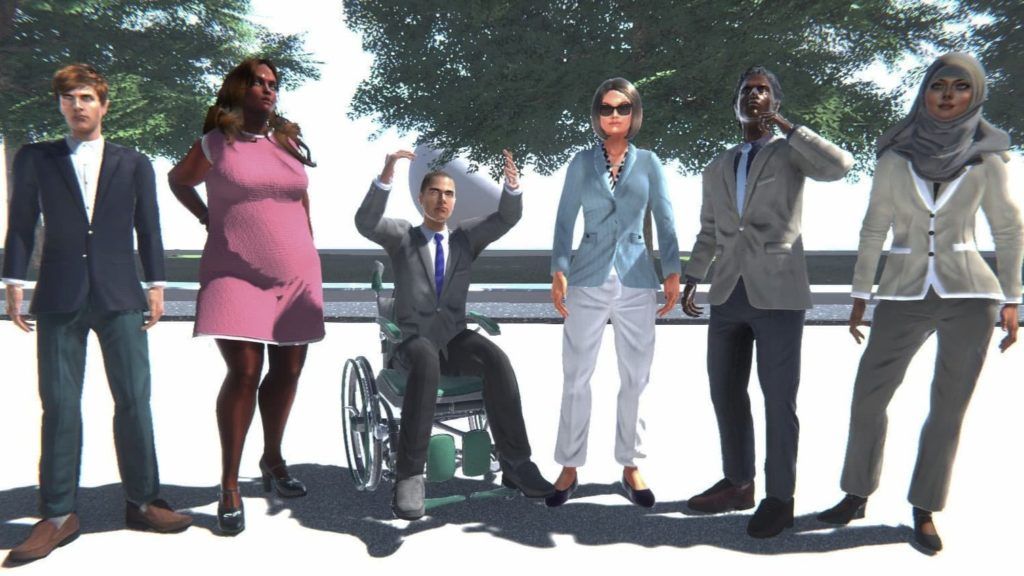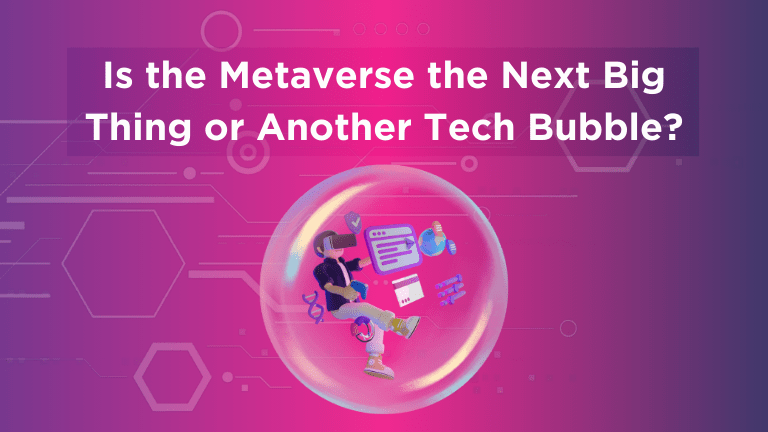Diversity and Inclusion in the Metaverse: How to Make the Metaverse More Inclusive

The Metaverse is poised to transform the way we connect on a fundamental level. Described as a new form of “embodied” internet, the Metaverse promises access to a new digital landscape. In this environment, we can connect with others through extended reality platforms, engage in virtual communities, and even recreate ourselves.
Over the last year or so, as the concept of the Metaverse has continued to evolve, you may have begun to consider who you might be in the Metaverse. The flexibility of this environment ensures users can go beyond simply replicating their appearance in an avatar. You can give yourself 6 arms, have snakes for hair, swap genders, or even embrace a different species.
For companies investing in the Metaverse, both from a development perspective and the age of Metawork, this freedom pulls new questions into focus about how we can maintain the concepts of diversity, equity, and inclusion, while still keeping environments safe.
Exploring True Representation and Inclusion in the Metaverse
In its simplest format, the Metaverse represents a world without the limitations of reality. This adaptable, customisable virtual landscape offers an opportunity to create a more idealistic version of the real world. One that’s free from discrimination and bias.
With the power to be “anyone” we want to be in the Metaverse, we should all have an opportunity to rediscover and express ourselves. Customisable skins, avatars, and digital clothing offer almost limitless capabilities for personalisation.
In fact, the freedom of the Metaverse is one of its primary selling points. In NRG’s study from 2021, 46% of respondents said they plan on spending more time in the Metaverse. The last couple of years has led to a greater appreciation of online platforms’ role in community experiences and self-expression.
While there’s positive potential in the Metaverse, issues are also arising about true representation and inclusion. There’s still significant progress to be made when it comes to options for avatars and equitable entrance into digital worlds. Around 70% of survey respondents in one report said gender representation in virtual experiences was vital to them.
A further 60% also expressed concerns about the increased potential for discrimination and bullying against certain people in virtual worlds.
What Should Brands be Doing to Ensure Inclusion?
Various steps need to be taken to create a truly diverse, equitable, and inclusive environment. Brands created in the Metaverse will need to answer several questions. These include how their users are going to be leveraging the environments they create. Some of the most important steps companies will need to consider include:
Asking the Right Questions
To create a truly inclusive metaverse experience, businesses need to ask the correct questions about what inclusivity should look like in the environments they build. Leaders in the Metaverse ecosystem like Meta are taking steps to work with US civil rights groups, non-profit organisations, and academic institutions.
The key to success will be identifying Who’s using the Metaverse environment. And what kind of preferences they’ll have when it comes to freedom of expression. Companies will also need to think carefully about how they can ensure every participant in the Metaverse has the same experience. This could mean considering:
- How to transcend language and communication barriers
- Where to minimise segregation among groups
- What kind of steps can be implemented to reduce the risk of bullying
Leveraging the right talent
Diversity and inclusion shouldn’t just exist for users in the Metaverse. When considering the ethics and principles involved in building a Metaverse environment, employers will also need to consider how they use DEI in their hiring strategies. In today’s talent-short environment, where turnover is higher than ever due to the “Great Resignation”, diverse hiring practices are essential.
Prioritising diversity in hiring will serve several purposes for growing Metaverse companies. First, many talented professionals are now looking for more empathetic employers with a greater focus on inclusion. Hiring diverse talent means companies can access a wide range of perspectives, which is critical for creating an inclusive environment.
Whether they’re building XR technology for the Metaverse, Metawork spaces, or something else entirely, companies need to reconsider their hiring strategy to include more under-represented groups.
Providing Options for Self-Expression
Representations of people in the Metaverse need to be able to reflect the vast diversity we see in the physical world. Many companies engaging in the Metaverse today are already taking this into account. For instance, Meta avatars can now be built with new facial shapes and assistive devices like wheelchairs and cochlear implants.
Companies like Daz 3D are consulting with various cultural and ethnic expert organisations to remove unconscious bias, improve representation, and deliver more inclusive avatar standards. The company has already successfully created a collection of unique non-binary and female avatars, allowing people to celebrate their identity.
Co-creation with consumers and users could be vital to learning how to safely and ethically create a diverse environment safely and ethically. Brands will need to connect with their audiences regularly to ensure they’re providing all the options people need for self-expression. For instance, Dior partnered with Ready Player Me to generate customisable 3D avatars based on user-submitted photos.
Ensuring Diversity and Inclusion in the Metaverse
Inclusivity, diversity, and representation in the Metaverse is a complex subject. All companies must consider carefully as we approach this landscape. There’s certainly a lot of potential for freedom of expression in the Metaverse space. Brands need to work closely with Metaverse communities and wider groups to ensure they’re being more inclusive.
Without true diversity and inclusion, the Metaverse cannot be the idealistic environment many creators are imagining today.




